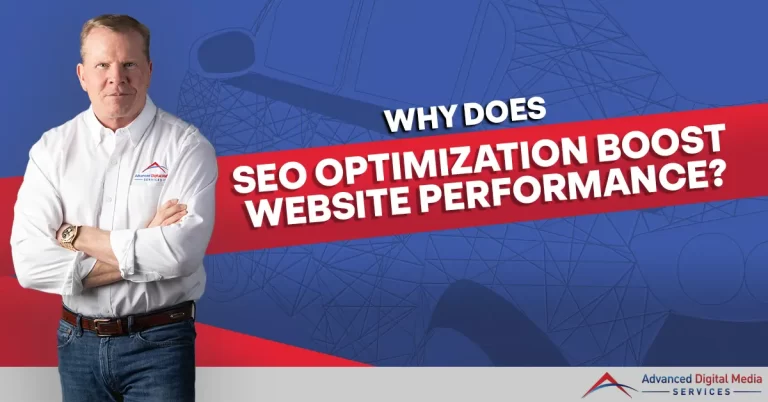Ask any marketer or business owner what they want to see in the world, and they will likely tell you more customers. What usually follows? Increased traffic to their website. 61% of marketers believe their most significant challenge is generating leads and increasing website traffic.
Search engine optimization (SEO) is critical if you want people to find your website. SEO refers to techniques that optimize sites. SEO is simply the process of making your website more visible to people searching for products or services related to your business on Google, Bing, or other search engines.
Improving your SEO ensures that more users will visit your website, increasing website traffic. Your posts will rank higher on search engines’ results pages if they are well optimized.
You will need to learn some fundamental SEO strategies to do this and eventually boost website traffic.
How to Increase Website Traffic
Have your team design a website that grabs attention.
A sitemap is a file that describes the structure of your website. This file provides search engines with all the information they need to crawl and index your site pages quickly. Google offers a sitemap generator. This is also what Bing does. To be listed in Google News, your site must have a sitemap.
Are you selling products? Add a few images of your products on your home page. Images can make content more appealing and understandable by making it more interesting. Images can also increase user engagement and accessibility to your SEO website. Your website should also encourage people to share and explore your content.
Your website’s title field should be able to distill the site’s content down to the name and relevant keywords. Don’t forget the importance of a well-designed website. People will abandon your website if it has terrible visual design, poor navigation, and substandard website security.
Concentrate on a specific topic.
Search engines aim to direct people to the most reliable and authoritative results. Your website should be a reflection of your expertise. If you are a restaurant owner, food should be the main focus of your website. Do not mix pancake content with locksmiths. An appealing website can make a big difference to consumers’ minds and help them to want to come and eat at your restaurant.
It is essential to be specific. Your website should reflect your expertise as a fly fisherman rather than deep-sea fishing. The more closely a concept fits the content on the page and aligns with the goals of relevant search engine results, the greater the possibility that the page will perform well in a keyword search.
Choose relevant keywords.
Keywords are the words that bring people to your website. You need to take all elements of your website, such as articles, images, videos, and podcasts, and summarize them into SEO-friendly terms. This approach is one of the reliable ways of increasing website traffic.
Ensure that you include keywords in your website’s URL, header tags, and meta descriptions. If you are using a website builder, you can access the backend of your website and enter the keywords.
Optimize keywords to match people’s search queries. Keywords should match your business/products/industry. You probably know that exact keywords can pull up other websites when someone searches for them. It would be best if you, therefore, backed up your common keywords with long-tail keyword searches, which are more specific.
Produce high-quality content regularly.
Consistently generating high-quality content is one of the best strategies for increasing website traffic. A blog about car engines, for example, must answer questions and illuminate niche topics. Go in-depth with informative articles such as “The 5 Fundamentals of Transmission Repair” or “Things That You Might Not Know About Carburetor Cleansing.”
However, take care to prevent plagiarism in your material to avoid search engine penalties. Search engines punish or bury websites with copied material, so update your website with original information. Make sure you don’t post copied material to avoid having your search rankings suffer. High-quality, optimized content and quality backlinks may improve a site’s ranking.
Make eye-catching page titles and headlines.
The page title and the headline are two different ways to name the same page. While the latter is intended to please those who click through to the page, the former is more general. In addition to making the material more straightforward to read and share, using title tags, meta descriptions, and headers correctly improves a site’s overall on-page SEO.
A title must be:
- keyword-optimized
- properly tagged in the website for on-page SEO
- able to summarize the main intent of the content
Make sure your page’s title and headline adequately summarize its content. Inaccurate titling can raise your bounce rate, repel prospective leads, diminish your topic authority, and result in search engine penalties. In other words, it will have the reverse effect of increasing website traffic.
Create comprehensive meta descriptions.
A meta description (also known as a “snippet”) is a short paragraph in each page’s HTML code. They provide more detail about the page’s purpose and are displayed under page titles. Search engine results will show meta descriptions below page titles.
You can use this area to write more detailed descriptions with approximately 140 characters. Otherwise, these descriptions won’t display in full in search results. However, beware: Don’t put all your keywords in the meta description. Search engines don’t like keyword stuffing.
Master internal linking.
When other websites link to your site, you can increase your search engine authority. This is especially true if external pages are trusted and well-respected. These are known as backlinks.
Backlinks have the most significant benefit for your website’s off-page SEO metrics. Google’s ranking algorithm evaluates the quality and quantity of incoming links within your website’s profile. The higher your overall SEO score, the better.
Your website authority will also be enhanced by valuable external links that reference your visitors. However, you have no control over them. You can do your best work and expect them to come your way.
On the other hand, you have complete control over internal links. To drive more visitors to your site, you should link to related articles that discuss concepts connected to your topic. You want to link to anchor texts; the words visitors click to go to another page. If you have a post on spark plugs and want to link it to a post on engine maintenance, then use the hypothetical anchor text “replace spark plugs” for more SEO juice.
Internal links should be natural and sparingly employed. Search engines will reject a paragraph with only links. It is also vital to ensure that your links work. Broken links are a sign that you don’t care about site maintenance, and search engines will penalize you.
The Bottom Line
SEO is continuously evolving, and it may be challenging to keep up with it to ensure that your business remains relevant online, bringing in new clients and maintaining current consumers. These seven tips are a terrific place to start and reap the benefits of increasing website traffic, but we would love to assist your business where it needs it the most.
Improve Your Online Presence with Us
Advanced Digital Media Services can help you with all areas of SEO that focus on increasing website traffic, including a comprehensive assessment of your website, competitive research, and establishing quality backlinks. Our team is an expert in SEO in Colorado Springs and will provide you solutions for website marketing. Contact us now!






